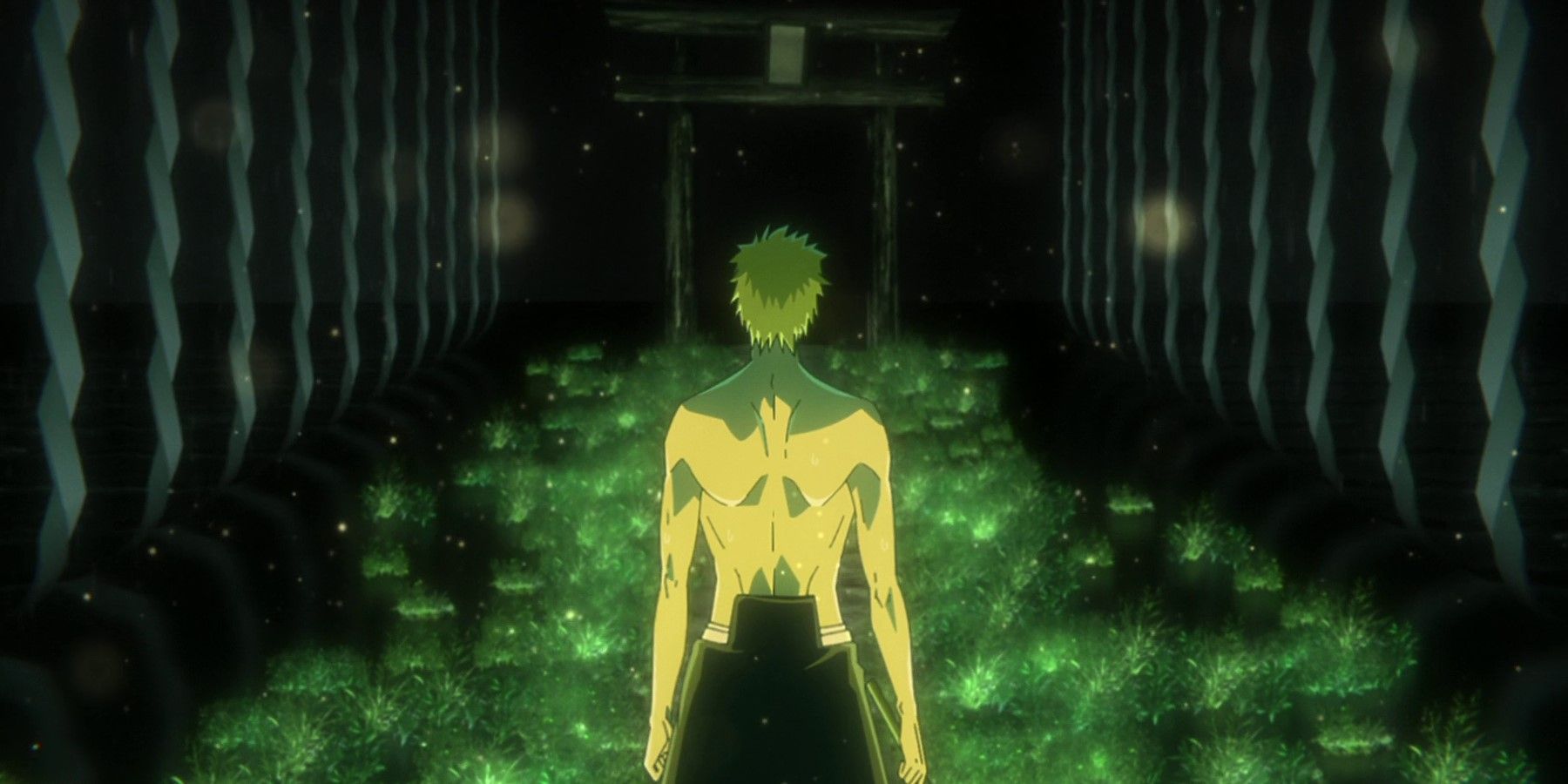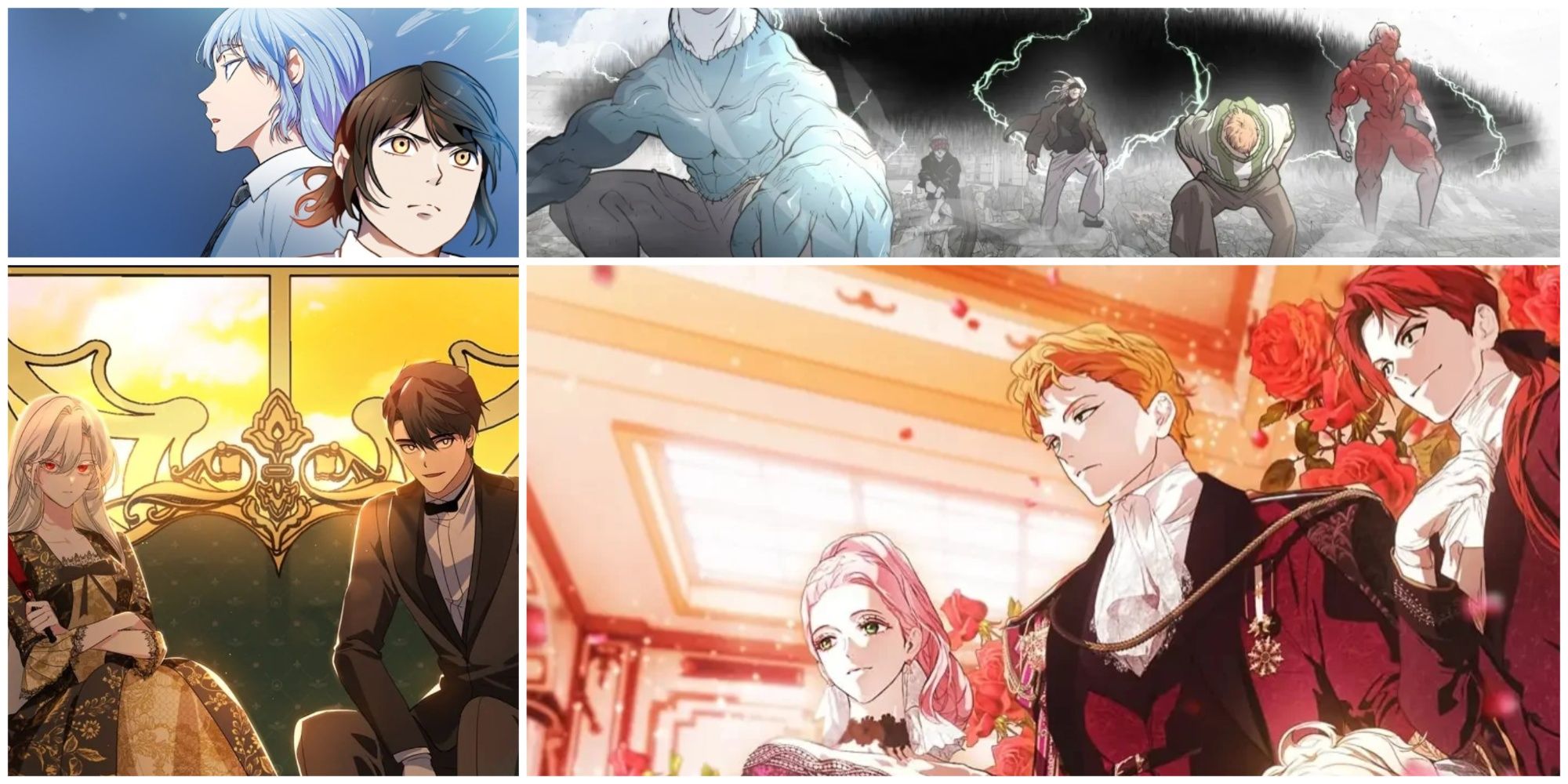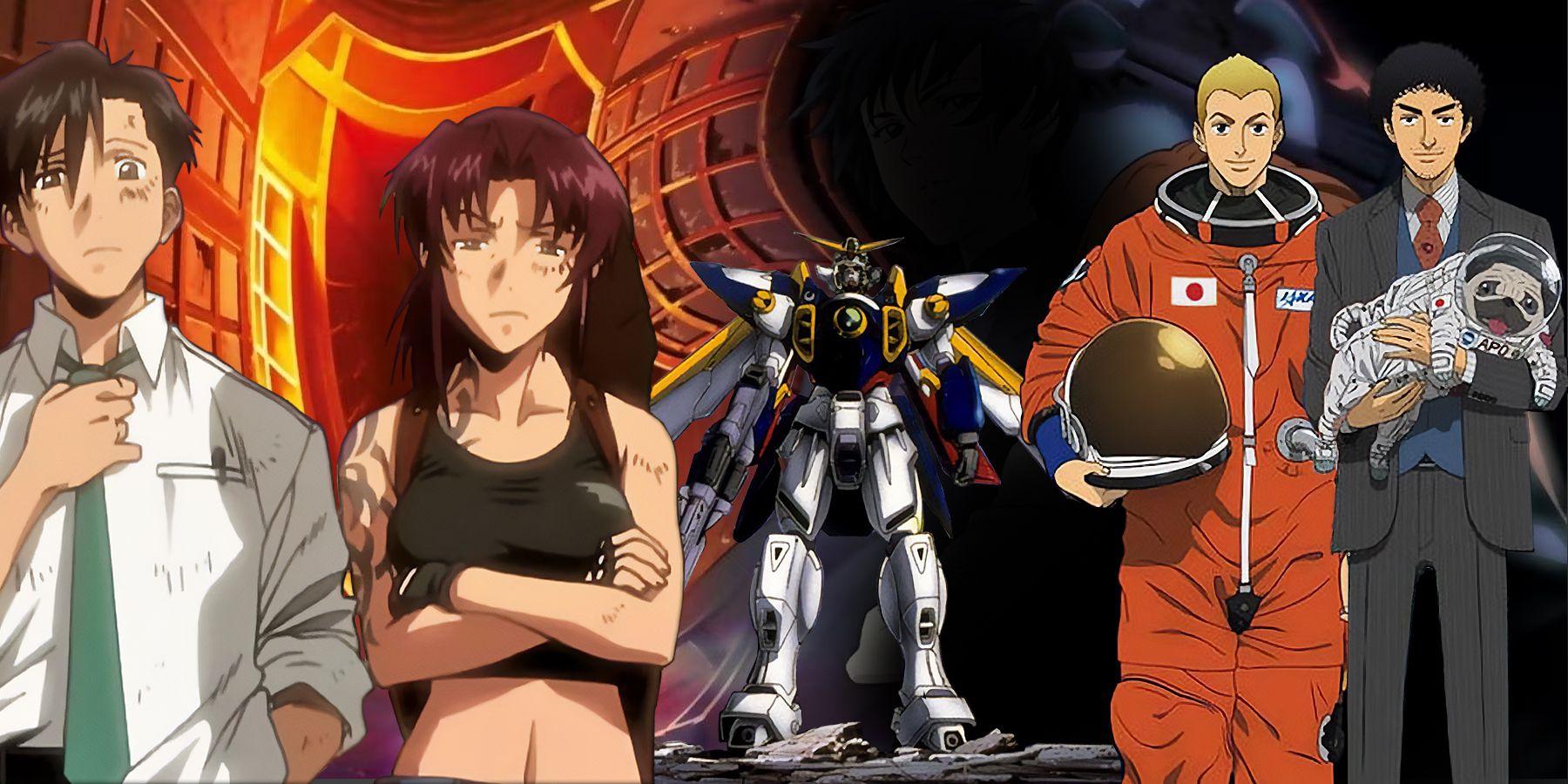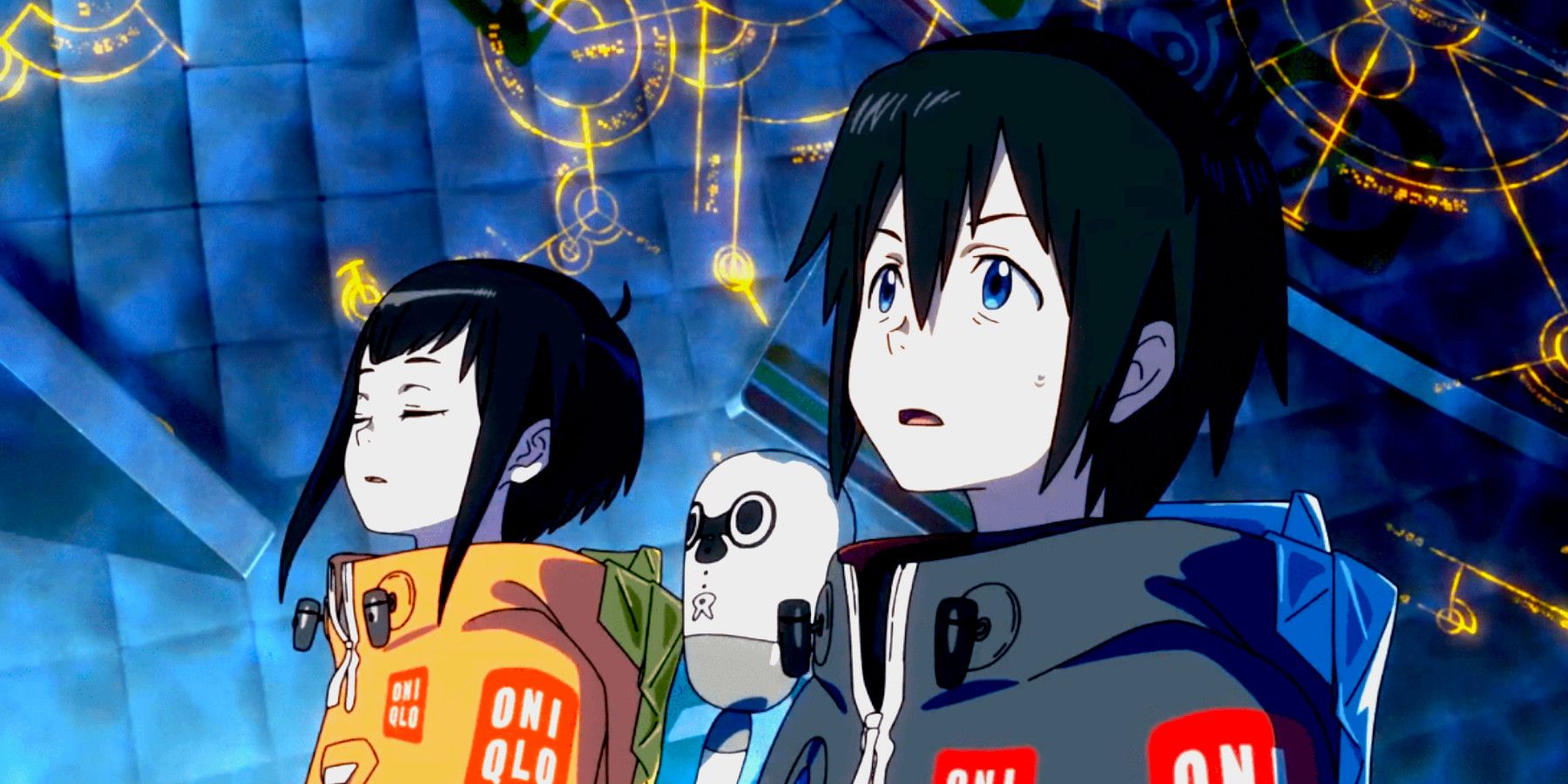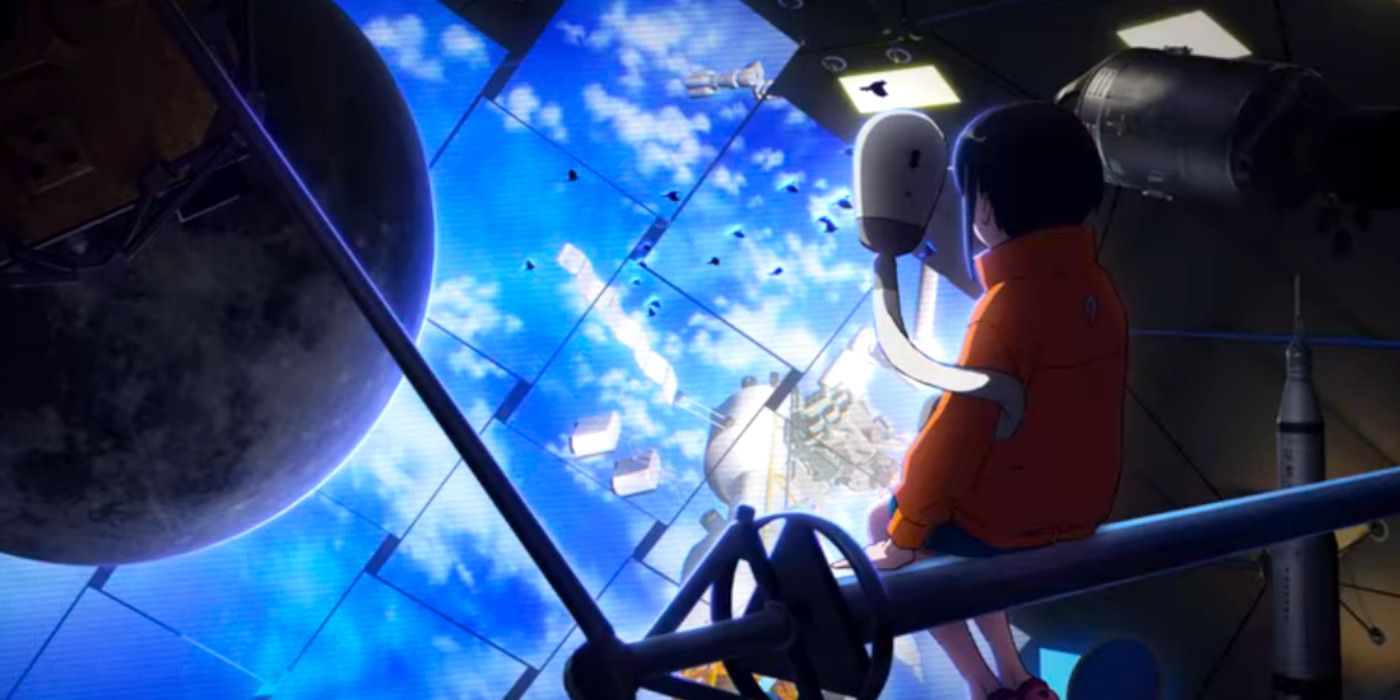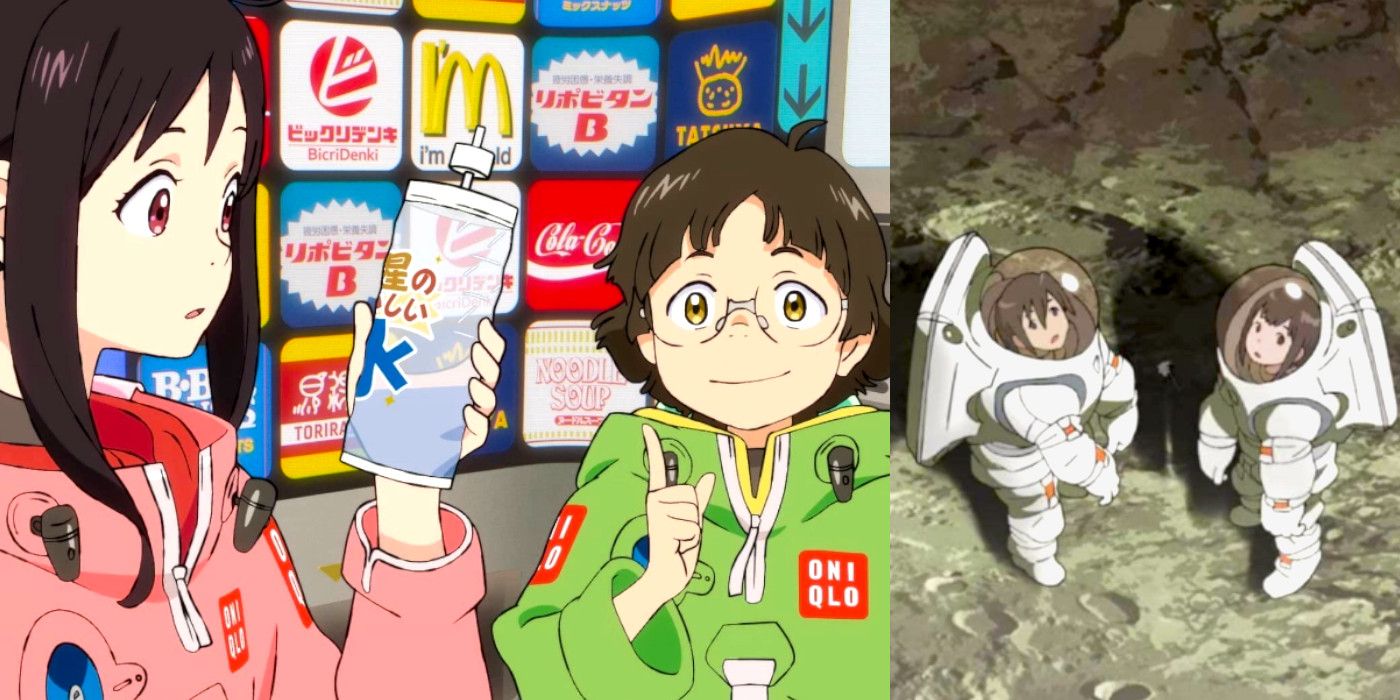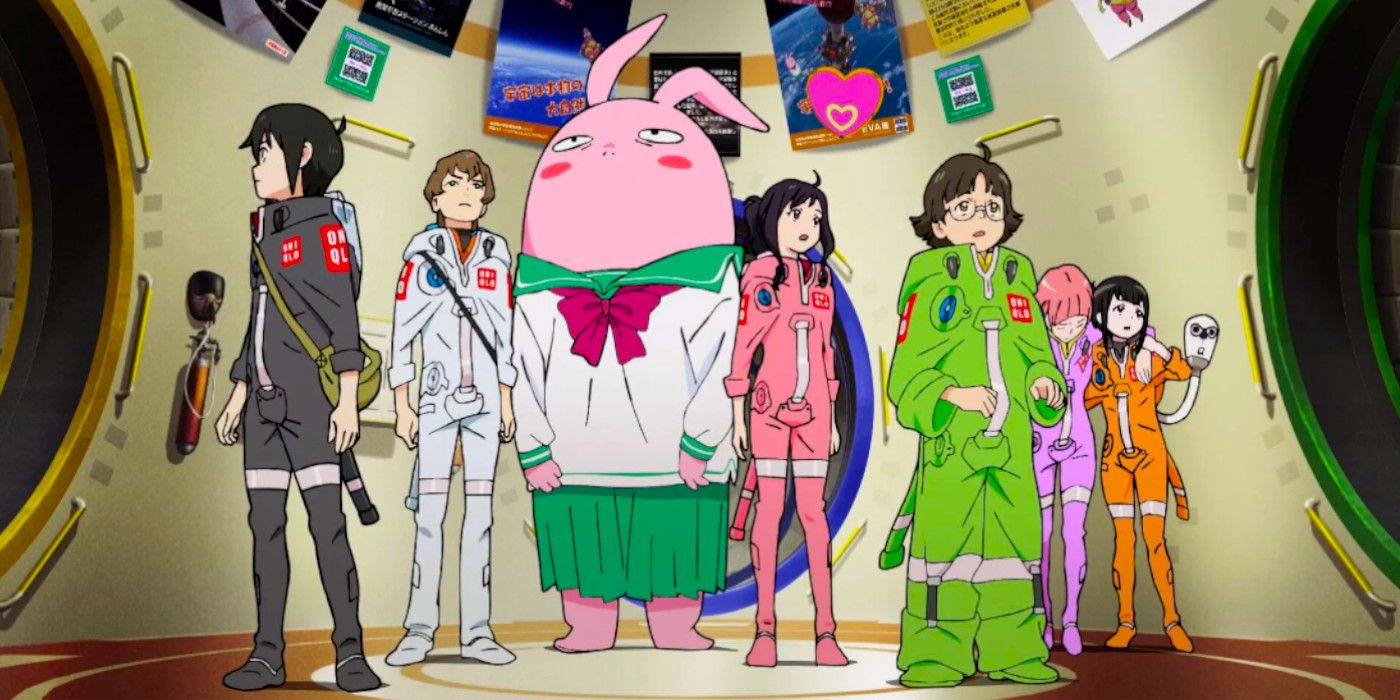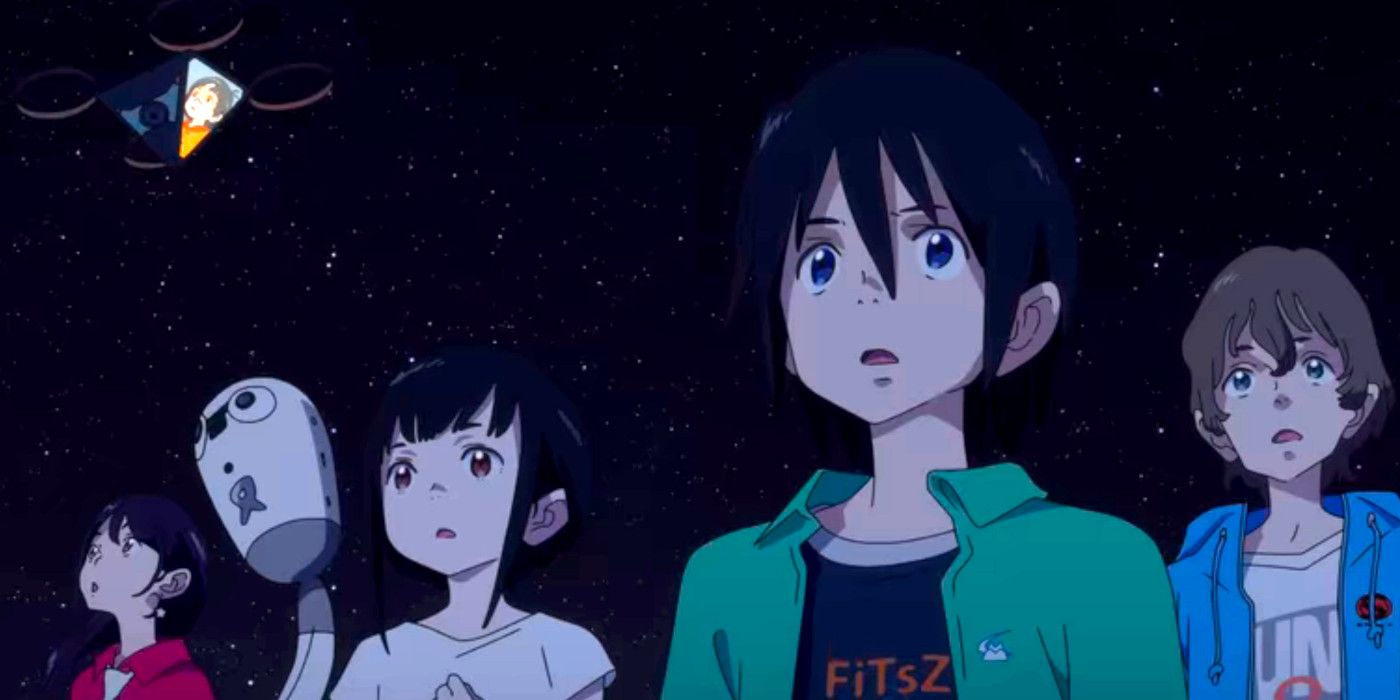This article contains spoilers for Episode 6 of Orbital Children.Mitsuo Iso's creation, Orbital Children (aka Extraterrestrial Boys and Girls) is an entirely believable sci-fi Anime about two youngsters who were born on the Moon. Touya Sagami and Konoha Nanase are the only remaining survivors of the fifteen infants born in space, and they have spent most of their lives aboard the Japanese-built Anshin space station.
In an attempt to encourage space exploration to continue once again, Miina Misasa, Hiroshi Tanegashima, and Taiyou Tsukuba are sent on a promotional cosmic vacation to join the extraterrestrial children on Anshin. Everyone is forced out of their comfort zones when unexpected space debris leaves them cut off from society and fighting for their lives.
Scientific Accuracy
Excluding the last two episodes, almost everything depicted in Orbital Children is relatively realistic and appears to begive an accurate representation (from a layman's point of view) of space travel. The characters have to deal with intellectual concepts of philosophy, physics, geometry, decompression, mathematics, and more, as they attempt to survive their disastrous cosmic adventures.
Most science fiction storylines rely heavily on their creative freedom, teleporting viewers into a world that could not possibly exist outside of one's imagination. As exciting as this may be, some viewers long for a more relatable sci-fi Anime to watch, and Orbital Children will likely satisfy that craving. Not only are relevant organizations such as NASA and the United Nations worked into the storyline, but also contemporary factors such as social media, discrimination, and the development of Artificial Intelligence.
Orbital Children delves even deeper into scientific accuracy as it explains how certain rooms abord the Anshin space station have gravity, all thanks to Gravitron's effects. The other technological developments displayed throughout Orbital Children also seem quite possible and do not step into the realm of fantasy. In an attempt to combat the popular belief that AI might one day take over, scientists have come up with the creative solution of installing intelligence inhibitors in the hopes of regaining control. When an AI dubbed Seven shows signs of exceeding the accepted level and prophecies that humanity needs to decrease its population by 36.79% in order to survive, the AI is destroyed, and Touya and Konoha are basically left to fend for themselves.
Entirely Possible (and Potentially Probable)
As the likes of Elon Musk and Jeff Bezos join in the space race with ideas of one day inhabiting the cosmos as motivation, many people have found themselves involved in the realistic discussion of whether or not they would leave Earth if given the chance. In the not-so-distant future of 2045, humanity makes its first attempt several years before Orbital Children is set, and began taking up residence in custom-made space stations and on the Moon. Unfortunately, when the first generation of space-born babies met an untimely demise, all but a few retreated back to their home planet. Touya and Konoha were the only children to see their teenage years as extra-terrestrials, thanks to the advanced engineering of Seven, and remain in space, physically unable to join the rest of humanity on Mother Earth.
It becomes quite evident that there would be developmental consequences to outer-space reproduction, as even with the help of Seven's technology, Touya and Konoha's bodies have clearly taken a toll on living in the unnatural environment. Touya seems to have muscular dystrophy to contend with, battling with the simplest of tasks such as walking or running, and instead relies heavily on a wheelchair-type apparatus for transportation. Konoha's struggles seem to be more severe, as her AI companion substitutes as a 24/hour nurse with a direct link to assess her heart rate. As amazing as it may be to one day live in space, even astronauts suffer physical damage to their anatomy, and adequate access to oxygen, food, and water should not be the only priority on optimistic space travelers' minds. Orbital Children certainly adds some perspective to an otherwise romanticized concept.
Charismatic Characters
It is quite commendable that the Ghost in the Shell animator is able to squeeze so much depth into his characters in only six short episodes, as he creates a relatable and interesting assortment of personalities. Each main character goes through a significant amount of personal development as the story unfolds, and yet their progress does not feel rushed or forced. First impressions are thrown out of the window by the end, as the exciting twists and turns of the tale prompt personal revelations left, right, and center.
The fan-favorite position is fought for between Touya, the bitter and resentful child prodigy hacker, Taiyou, the uptight and conscientious law enforcer, and Miina, the bubbly and naive influencer. Viewers can also choose to focus on Konoha, who remains selfless and kind regardless of her impending death, or the adorable genius kid-brother, Hiroshi who is just too cute for words. Nasa Housten gets a lot of attention as one of the most intriguing characters and even the AI units each have a unique personality of their own.
The big debate at the end of the day comes down to the classic question: should one sacrifice a few to save many? Touya has developed a deep hatred for humanity, who have essentially abandoned him in space and eliminated his probability of a future. Many Earthlings, on the other hand, are fed up with the extra-terrestrial children because a large sum of taxpayers' money goes towards their survival in space, instead of furthering development on Earth. Terrorists side with Seven and believe that a massacre is inevitable, and those trapped in the Anshin space station are attacked with nuclear weapons for the sake of saving the rest of humankind.
Will There be More Orbital Children?
With only six episodes, one would assume that there is more to follow, however, there has been no confirmation of the show's renewal. Many fans would argue that Orbital Children is one of those cases where less is more, as the series finale ties the story up in a relatively satisfactory manner. Although certain viewers are disappointed by the introduction of the 11th Dimension (which comes across as a bit far-fetched), most are content with how the children's adventure ended, to be continued within the imagination. Thankfully, Mitsuo Iso left himself an opening to carry on with this sci-fi adventure, as the group of friends all seem determined to return to the cosmos once again.

